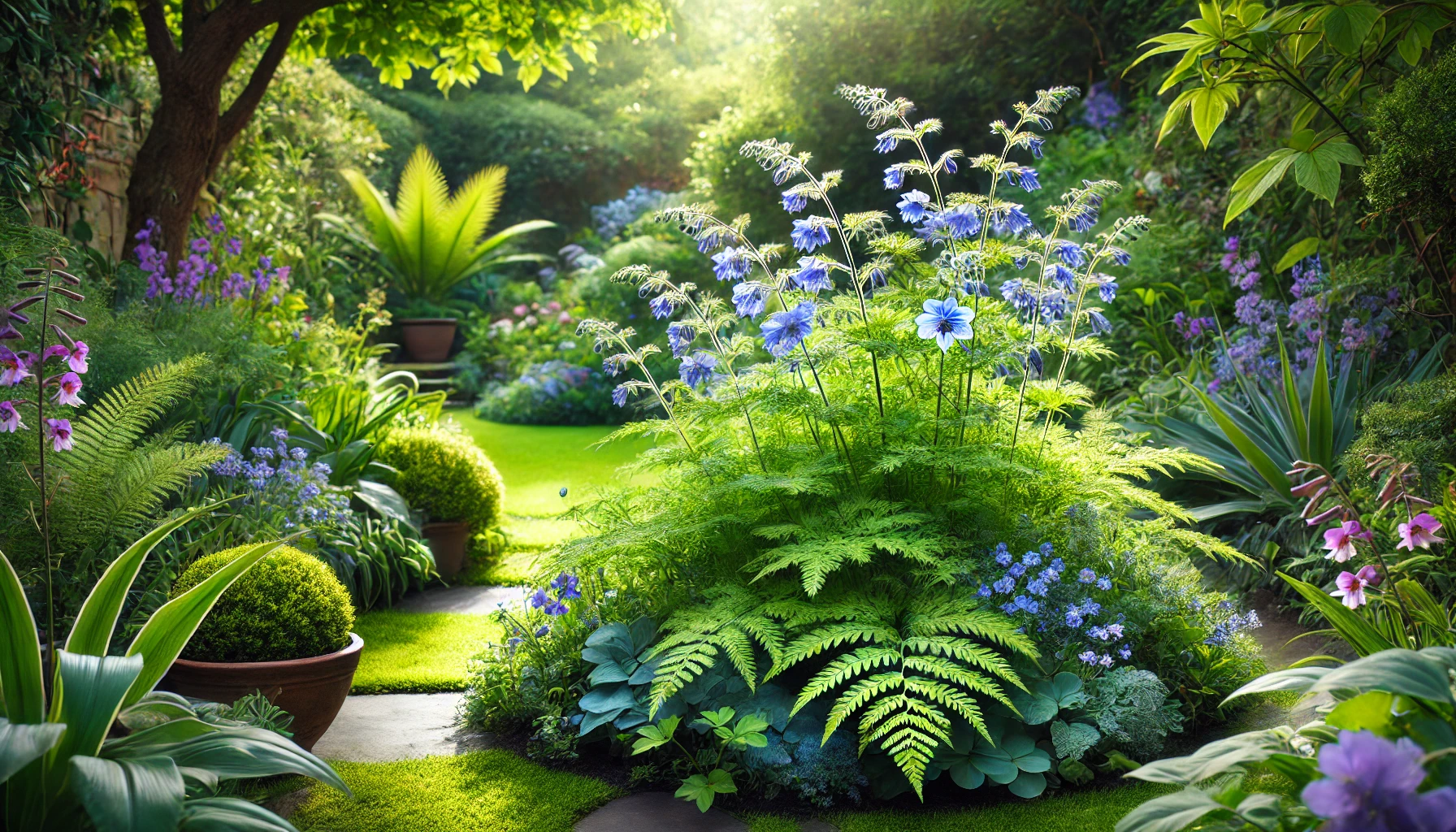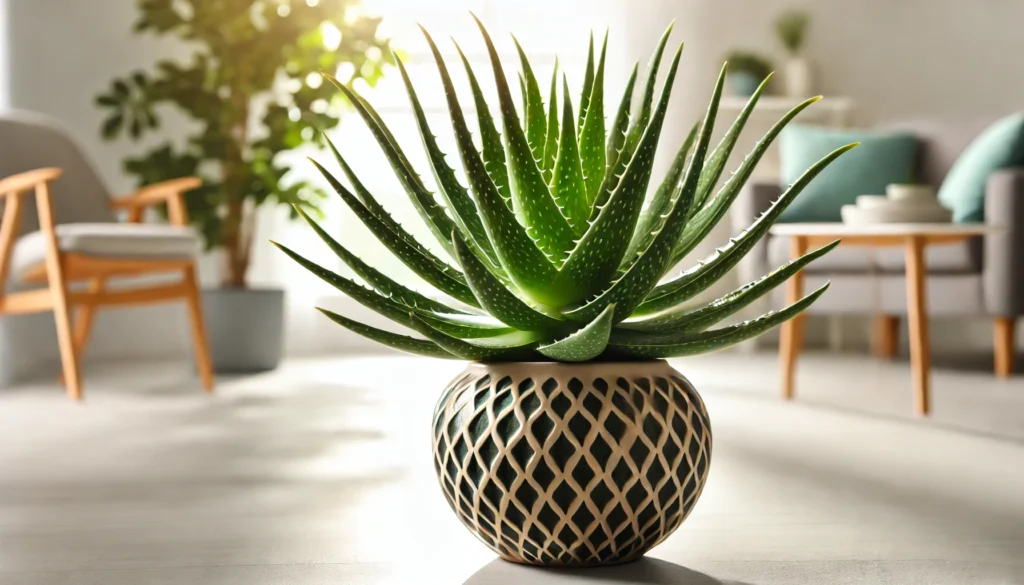
Jacob’s Ladder, scientifically known as Polemonium caeruleum, is a lovely perennial plant that brings elegance to any garden. It gets its name from the ladder-like arrangement of its delicate leaves, which resemble rungs. This plant grows between 1 to 3 feet tall (30 to 90 cm), making it a charming addition to borders, woodland gardens, and shaded spots. Known for its vibrant blue or violet flowers, Jacob’s Ladder blooms in late spring and early summer, drawing attention with its soft, graceful presence.
History and Ideal Growing Conditions
Jacob’s Ladder has a long history as a beloved garden plant, originating from woodlands and meadows in Europe and parts of Asia. It thrives in cool, shaded environments, making it a great choice for gardens with partial shade or areas that don’t get full sun. This plant prefers moist, well-draining soil that is slightly acidic to neutral. In ideal conditions, it blooms profusely, adding a delicate splash of color to the garden. Its perennial nature means that it will return year after year, making it a low-maintenance favorite.
Toxicity and Pets
Jacob’s Ladder is generally considered non-toxic to pets, making it a safe choice for homes with cats and dogs. This means you don’t have to worry about curious pets getting sick from a nibble or two. However, it’s always best to discourage pets from chewing on plants as a precaution.
Best Practices for Caring for Jacob’s Ladder
Watering and Humidity
Jacob’s Ladder enjoys moist soil but doesn’t like being waterlogged. Regular watering is key, especially during dry periods, but be sure to allow the soil to dry out slightly between waterings. If the humidity is high, the plant will thrive, but in dry climates, occasional misting can help maintain its health.
Soil, Light, and Temperature
This plant loves rich, well-draining soil, ideally with a slightly acidic to neutral pH. When planting Jacob’s Ladder, place it in partial shade, as too much sun can scorch its leaves. Aim for temperatures between 60-70°F (15-21°C), though it can tolerate colder conditions down to 50°F (10°C). Mulching around the base helps retain moisture and keeps the roots cool.
Fertilizing
Jacob’s Ladder doesn’t require heavy feeding. A balanced fertilizer applied once in early spring is enough to keep it healthy and promote lush growth. Avoid over-fertilizing, as this can lead to leggy growth and fewer flowers.
Common Problems and Remedies
Jacob’s Ladder is generally a hardy plant, but it can suffer from powdery mildew or leaf spot in overly humid conditions or if it is too crowded. To prevent this, ensure good air circulation and avoid overhead watering. If mildew or leaf spot occurs, trim off affected leaves and use an appropriate fungicide.
Pruning Jacob’s Ladder
Pruning is an important part of keeping your Jacob’s Ladder looking its best and promoting healthy growth.
Tools Needed
You’ll need a pair of clean, sharp pruning shears. It’s important to sanitize your tools before and after pruning to prevent the spread of disease. A mild bleach solution or rubbing alcohol works well for this.
Identify Areas to Trim
Focus on removing any dead or damaged leaves. You can also trim back the plant by about one-third after it has finished flowering to encourage a tidy shape and possibly a second flush of blooms.
Deadheading
To keep the plant looking fresh and to extend its blooming period, deadhead spent flowers regularly. This encourages new blooms and prevents the plant from putting energy into seed production.
Remove Leggy Growth
If your plant starts to look leggy, especially in mid-summer, it’s time to prune. Cut back the tall, spindly stems to encourage bushier growth. Prune up to one-third of the plant, but don’t overdo it.
Remove Damaged or Diseased Leaves
Check regularly for any leaves showing signs of disease or damage. These should be removed immediately to prevent the spread of illness to other parts of the plant.
Shape the Plant
If your Jacob’s Ladder grows unevenly or too tall, you can prune for shape. Trim the plant to a uniform height and remove any stray stems to maintain a rounded form.
Post-Pruning Care
After pruning, give your plant a good watering and a light feed with a balanced fertilizer to encourage regrowth.
Propagation and Benefits
Jacob’s Ladder can be easily propagated by division in early spring or fall. Simply dig up the plant and carefully divide the root ball into sections, replanting them in fresh soil. Not only does propagation give you more plants, but it also helps rejuvenate older clumps, keeping your garden full and vibrant.
In addition to its aesthetic beauty, Jacob’s Ladder is a pollinator-friendly plant, attracting bees and butterflies to your garden. It also requires minimal maintenance, making it an ideal choice for both beginner and experienced gardeners.
Final Thoughts
Jacob’s Ladder is a graceful, easy-to-care-for perennial that adds a touch of elegance to any garden. With the right growing conditions and a little attention to pruning and watering, this plant will thrive year after year. Whether you’re looking to fill a shaded spot or simply add more color to your landscape, Jacob’s Ladder is a fantastic option.
Stay connected with the world of plants! Subscribe to Phylofy for expert gardening tips, DIY projects, and eco-friendly inspiration. Join our community and nurture your love for nature. Don’t miss exclusive content and updates. Subscribe now!



